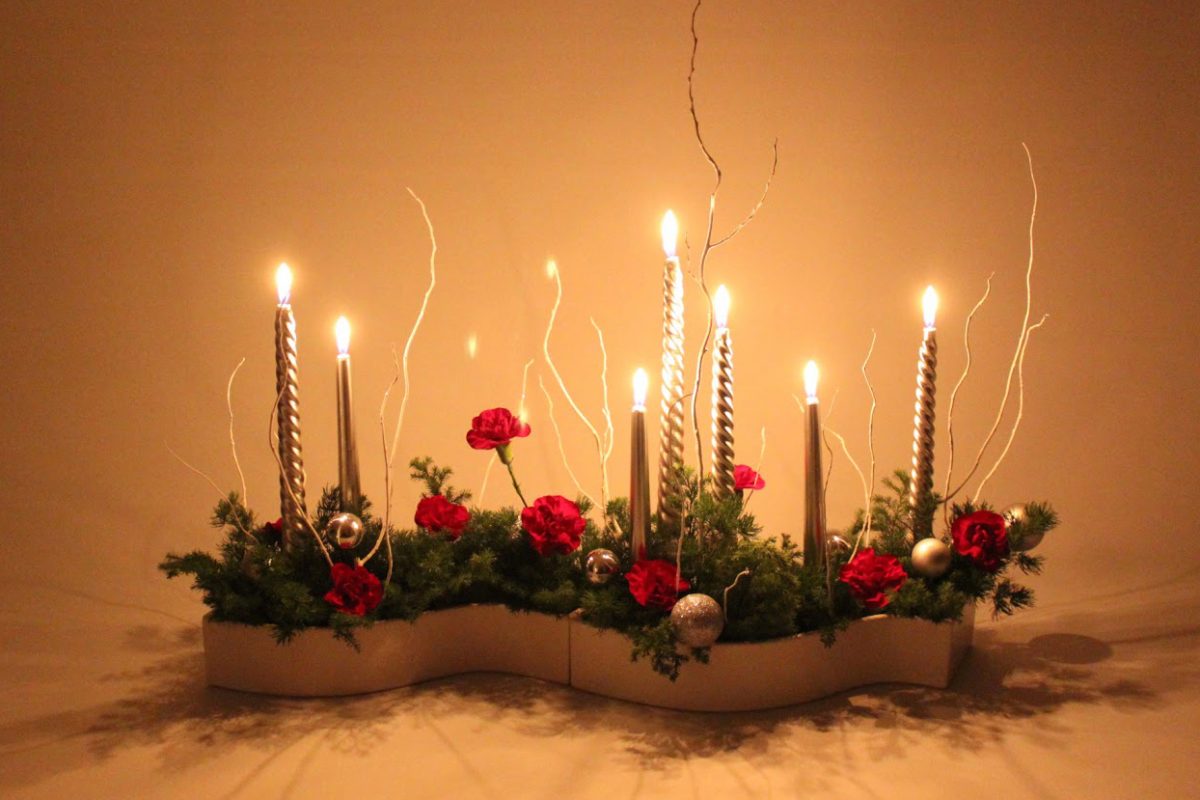
A reflection for the Third Week of Advent, by Fr. Frank Hawkshaw, S.F.M. (1927-2009).
The Japanese word Ikebana means “living flower.” In Japan, flowers are used to decorate and also to express a meaning. Four women in the parish of Our Lady Queen of Peace in the diocese of Tokyo take turns arranging flowers for the Sunday liturgy. Before arranging the flowers they meditate on the readings for the following Sunday and then strive to express the fruit of their meditations with the flowers.
For the first Sunday of Advent, in the “B” year of the three-year cycle of the Liturgy of the Word, Isaiah describes the situation of the Jewish people on their return to Jerusalem after 50 years of exile in Babylonia. The city, like a city devastated by war, is in shambles. In desperation Isaiah cries out, “Oh Lord, tear open the heavens and come down.” We are led to feel our own personal and collective worlds in shamble and cry out with Isaiah. On this first Sunday of Advent, the Ikebana is characterized by its barrenness.
On the second Sunday the mood changes. John the Baptist appears and proclaims a Baptism of Repentance in preparation for the coming of the Saviour. People ask him if he is the Messiah that is to come. John replies: “I am not, I am a voice in the wilderness: make straight the way of the Lord.” There is an air of expectation among the people. In the Ikebana a flower begins to bloom.
A change of heart expresses itself in works of justice and charity. When we open our hearts to the deprived and little ones of the world, we open our hearts to Christ.
On the third Sunday John the Baptist preaches with great zest, “Prepare the way of the Lord.” People ask John, “What must we do?” He answers, “If anyone has two tunics, he must share with one who has none.” The tax collectors also ask John, “What must we do?” John replies, “Exact no more than your rate.”
A change of heart expresses itself in works of justice and charity. When we open our hearts to the deprived and little ones of the world, we open our hearts to Christ. A constant refrain in the readings for this third Sunday is joy, and the Ikebana begins to express brightness and joy.
On the fourth Sunday, Mary takes centre stage. In the “C” year of the cycle—the year of Luke—Mary, having consented to be the Mother of the Saviour, goes to the aid of her cousin Elizabeth. Elizabeth proclaims, “Of all women you are the most blessed and blessed is the fruit of your womb.” Christmas is very close and the mood is approaching that of Christmas. The Ikebana is now quite decorative.
On Christmas day, God’s glory appears and the Ikebana sparkles with the glory of the kingdom.
Advent is a time to prepare our hearts for the coming of the Saviour. John the Baptist and Mary are presented to us as models. John says, “I am not fit to undo the strap of his sandals.” Mary says, “My soul doth magnify the Lord, my spirit rejoices in God my Saviour.” With John and Mary, we bow in deep adoration before our Saviour God who became one of us in Jesus Christ.
Scarboro missionary Fr. Frank Hawkshaw was assigned to Japan after ordination and served there for 50 years. He and other Scarboro priests were instrumental in introducing the first credit unions in Japan. The above article was reprinted from Scarboro Missions magazine, December 1991.

